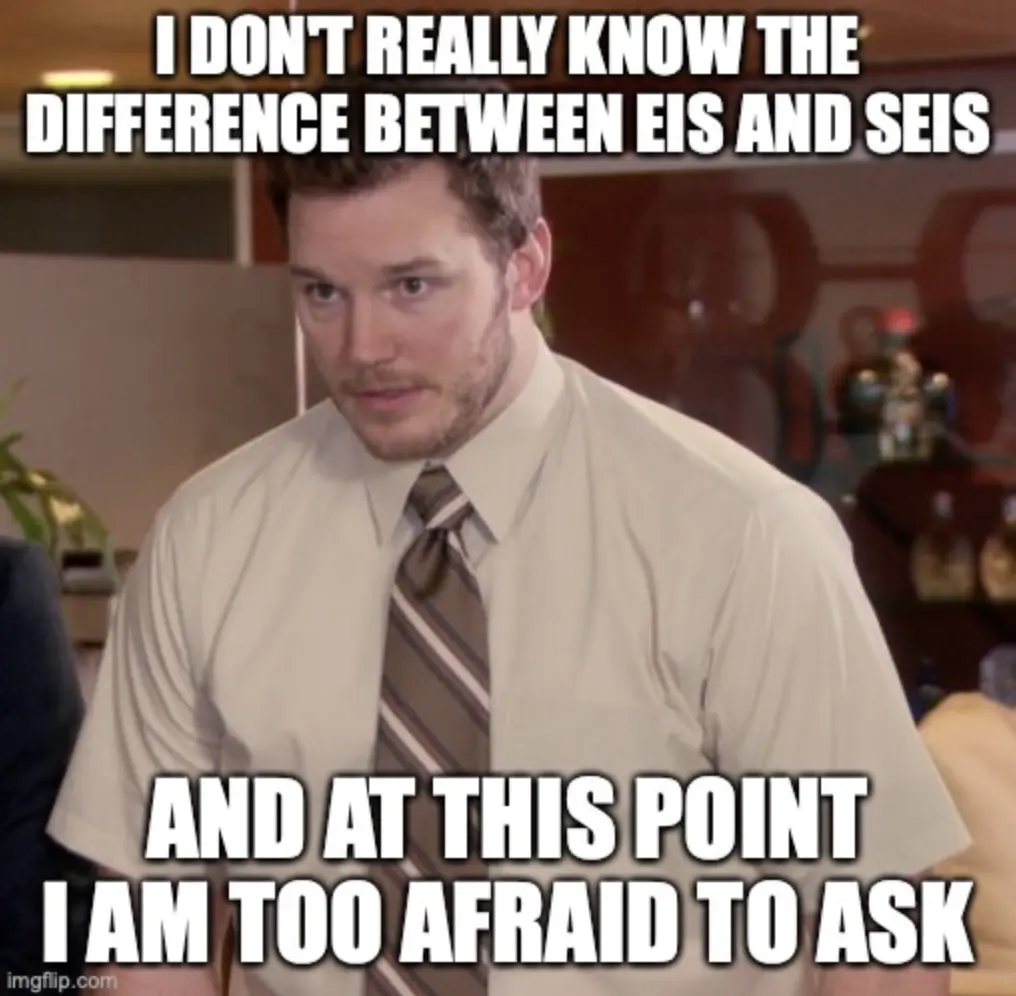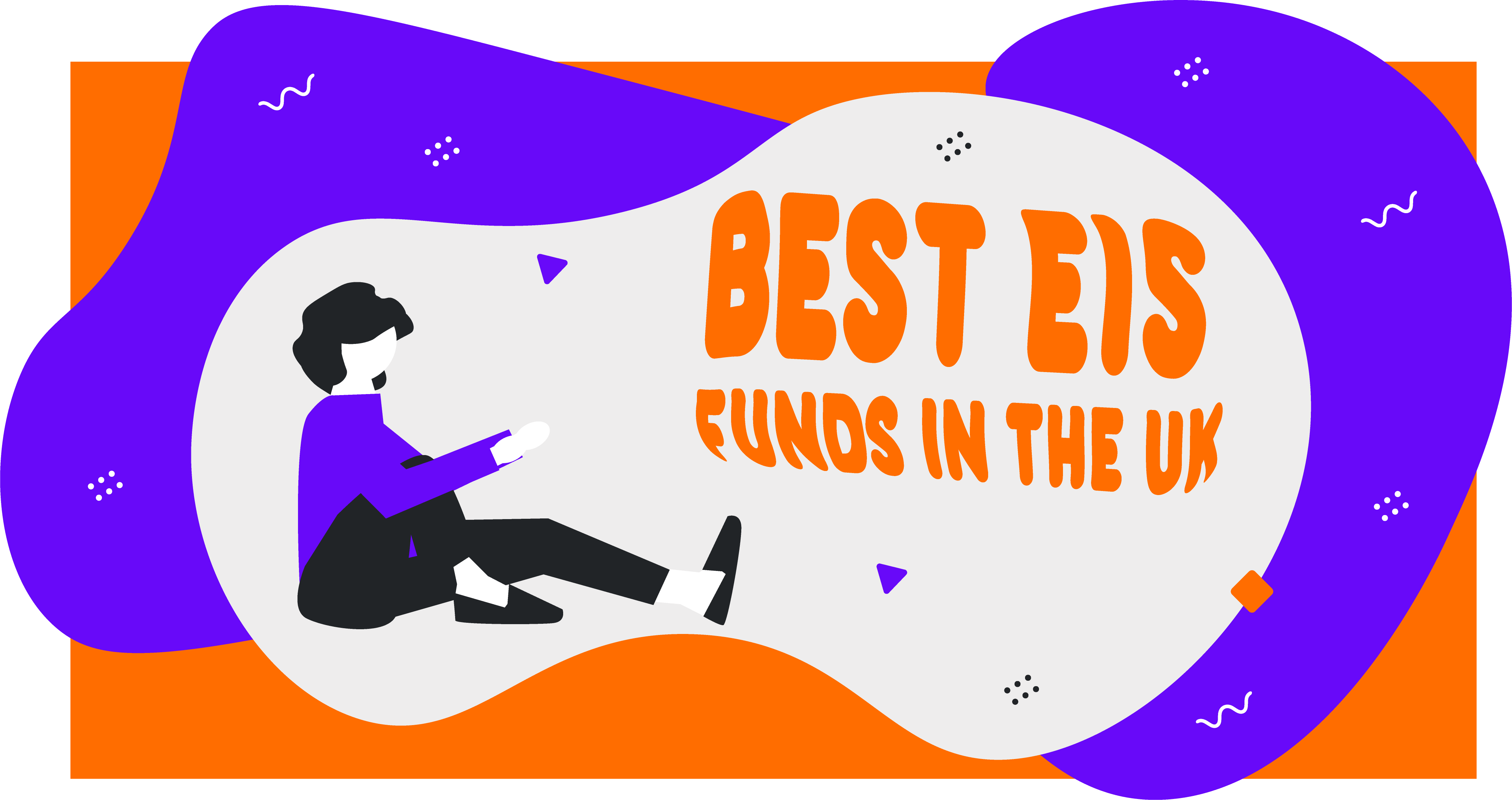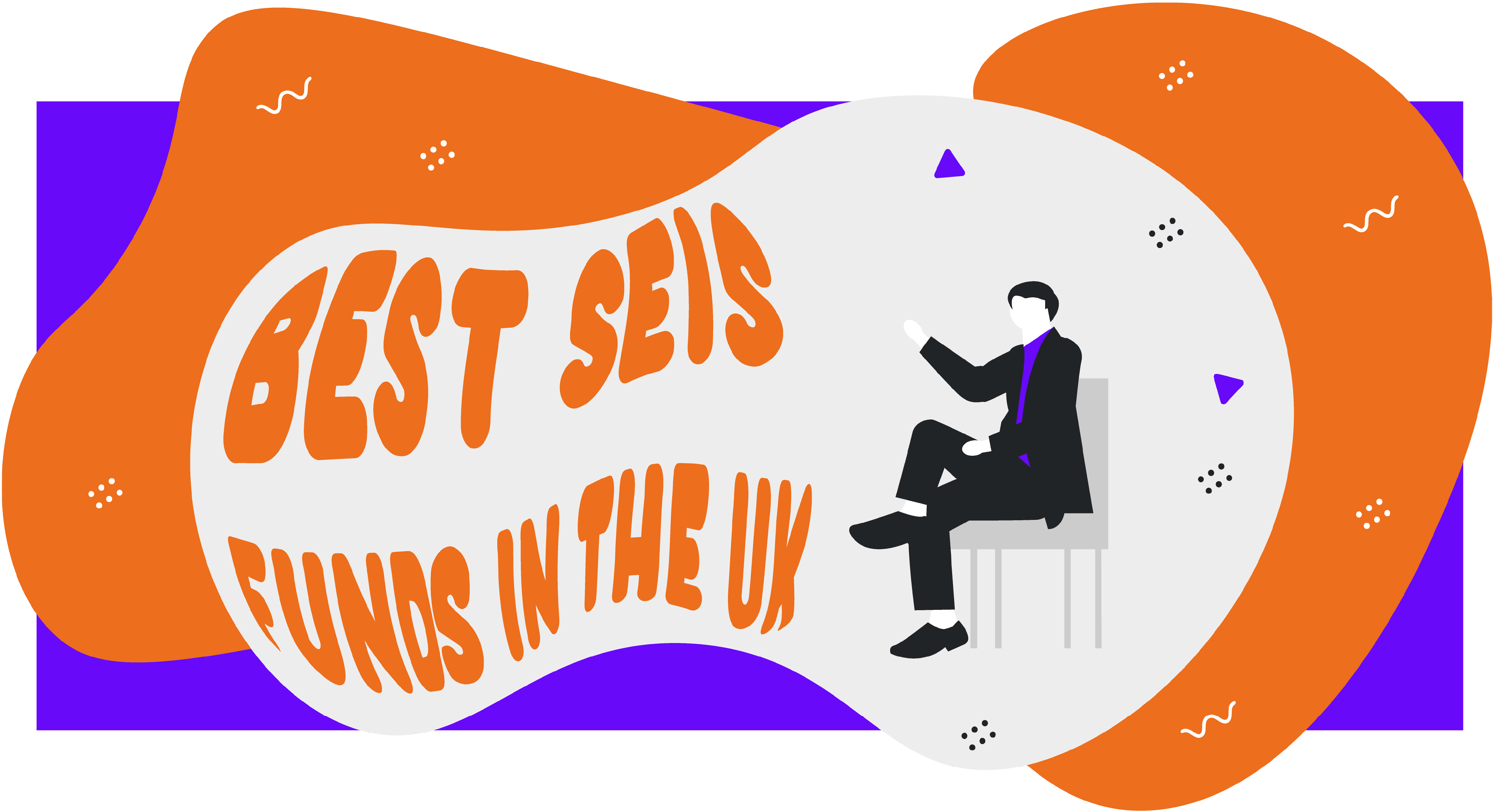What are the differences between SEIS and EIS?
some aspects of the two investment schemes are similar
In this blog post, we outline the main differences between SEIS (Seed Enterprise Investment Scheme) and EIS (Enterprise Investment Scheme).

Table of contents
- Introduction
- SEIS vs EIS explained - what’s the difference?
- What are the main differences in eligibility between SEIS and EIS?
- How much can a company raise under SEIS and EIS?
- Can you raise SEIS and EIS at the same time?
- What is Advance Assurance?
- What do I need to apply for Advance Assurance?
- What happens after I’ve applied for Advance Assurance?
- How to submit a compliance statement
- What happens after you’ve submitted your compliance statement?
- What can I do with the money raised?
- Information for investors
- Conclusion
We have previously outlined how both the Seed Enterprise Investment Scheme (SEIS) and the Enterprise Investment Scheme (EIS) work. Although some aspects of the two investment schemes are similar, there are also differences in how they work and what particular businesses they are aimed at.
SEIS vs EIS explained - what’s the difference?
SEIS and EIS have the same goal in mind: to encourage investment in new high-risk businesses in the UK. However, the main difference between the two is the type of business they cover and the amount of tax relief they cover.
SEIS is aimed explicitly at very early startup companies that have been trading for less than two years and only have up to 25 full-time employees. To qualify for SEIS, a business must also have less than £200,00 in gross assets. An individual investor can invest up to £100,000 per tax year and receive a 50 per cent tax break in return. So overall, there is a higher tax incentive for investors under SEIS.
Starting with the new tax year in April 2023, the SEIS rules will change slightly. The number of years a company has been trading will increase from two to three. In addition, the amount of funding a business can receive will go up to £250,000, and the amount an investor can contribute will rise to £200,000.
In contrast, EIS is still designed for small businesses but is aimed at those who have been trading for less than seven years. Businesses must also have up to 250 full-time employees (or 500 for knowledge-intensive companies) and less than £15 million in gross assets to qualify for EIS. An individual can invest up to £1 million per tax year (or £2 million for knowledge-intensive companies) and receive a 30 per cent tax break in return.
Under SEIS, your business can raise up to £150,000 in total. For EIS, this increases to up to £5 million in one year and up to £12 million total, or £20 million for knowledge-intensive companies.
Both SEIS and EIS allow investors to benefit from a Capital Gains Tax exemption on any profits from the sale of shares after three years. They also do not need to pay inheritance tax on shares held for at least two years under SEIS and EIS, and if shares are sold at a loss, an investor could offset this against their CGT (loss relief).
Below is a table outlining the main differences between SEIS and EIS:
| SEIS | EIS | |
|
Number of years of which business has been trading |
2 years (will increase to 3 years in April 2023) |
7 years, or 10 years for knowledge-intensive companies |
|
Maximum amount of full-time employees |
25 |
250, or 500 for knowledge-intensive companies |
|
Maximum gross assets |
£200,000 (will increase to £250,000 in April 2023) |
£15 million |
|
Maximum total investment from investors |
£150,000 |
£12 million, or £20 million for knowledge-intensive companies |
|
Maximum individual investment per tax year |
£100,000 (will increase £200,000 in April 2023) |
£1 million, or £2 million for knowledge-intensive companies |
|
Maximum investment per calendar year |
N/A |
£5 million, or £10 million for knowledge-intensive companies |
|
Number of years one can spend funds following an investment |
3 years |
2 years |
What are the main differences in eligibility between SEIS and EIS?
As briefly outlined above, there are slightly different eligibility criteria for both SEIS and EIS.
Your business will be eligible for SEIS if the following apply:
- It was established and is based in the UK
- It has traded for a maximum of two years
- It has less than 25 full-time employees at the time of investment
- It has gross assets worth less than £200,000
- It carries out a new qualifying trade
- It is not trading on a recognised stock exchange at the time of the share issue
- It does not control another company unless they are a qualifying subsidiary
- It has no arrangements to become a quoted company or a subsidiary of another
- It has not been controlled by another company since your business was incorporated
- It is not a member of a partnership
If your business does not quality for SEIS, it may still be eligible for EIS if it meets the following:
- It was founded and is currently based in the UK
- It has less than 250 full-time employees
- It does not have gross assets worth more than £15 million before shares are issued
- It is not trading on a stock exchange at the time the shares are issued
- It does not control another company other than qualifying subsidiaries
- It is not controlled by another company or has 50 per cent of its shares owned by another company
- It will not close after completing a project or series of projects
How much can a company raise under SEIS and EIS?
The maximum total investment amount for SEIS funding is £150,000, while it is up to £12 million under EIS.
Under SEIS, if your company has already received de minimis state aid in the last three years, it may not be able to receive the total amount of investment, as the state aid counts towards your investment limit.
Can you raise SEIS and EIS at the same time?
The good news is that you will be able to raise money under both schemes at the same time if your business is eligible for both. However, you have to do so in the correct order. Because SEIS is aimed at early-stage companies, you won’t be able to raise under EIS and then go back to claiming funds under SEIS.
As long as you keep on top of your funds and ensure they are done at the appropriate time, you can offer investors EIS shares after you have reached the SIES limit. However, you cannot raise investments under both schemes on the same day, so you must issue SEIS shares before you take funding under EIS. You will also need to issue SEIS share certificates before EIS funding is carried out.

What is Advance Assurance?
Investors will want to know if a company they are investing in under either SEIS or EIS is in fact eligible for the appropriate scheme. Otherwise, they may not get their tax breaks. HMRC often grants Advance Assurance if they agree with you an investment would meet the requirements of a venture capital scheme. In this context, Advance Assurance would be presented in a certificate, confirming the company's proposed share issue would qualify for SEIS or EIS tax relief.
However, this does not necessarily mean that the company will automatically qualify for SEIS or EIS tax relief - it will need to issue the shares before it can be confirmed. In addition, after a company has issued shares, it must submit a compliance statement to HMRC, regardless of whether it has applied for or received Advance Assurance. HMRC will then confirm if the company can issue SEIS or EIS certificates.
What do I need to apply for Advance Assurance?
In order to apply for Advance Assurance for SEIS or EIS, you will need to ensure you fulfil the criteria. You will need to provide the following:
- The date your company started trading
- The name, address and intended amount of investment from at least one potential investor. You only need to include this information if you haven’t previously received Venture Capital Scheme investment. The person you list does not have to be committed to invest, this is just required to prevent any misleading applications
- The details of any SEIS/EIS investments you may have taken out previously
- A three-year business plan with a financial forecast. Your financial forecast should be for three years from the date of your application and show you need the investment
- Pitch deck. This can be the same one you may have previously shown potential investors
- Latest company bank statements or accounts
- Current company Memorandum and Articles of Association
- Your response to the risk to capital condition
In 2019, HMRC introduced a SEIS/EIS Advance Assurance Checklist, which helps business owners ensure they have included the right information with their application. This checklist must be completed and submitted alongside the application form.
What happens after I’ve applied for Advance Assurance?
When your Advance Assurance application has been approved, you will have more opportunities to approach potential investors, knowing that their investment should qualify for SEIS or EIS tax relief.
One potential source of investment is a SEIS investment fund under SEIS, specialising in investing in seed-stage companies and small startups. As a business owner, you have the ability to attend networking events for company founders and angel investors. However, once you have Advance Assurance under SEIS or EIS, you should have more confidence that you can find an investor who is interested in your business. Friends and family can also use SEIS or EIS to help invest in you, but there are restrictions if they are investors.
How to submit a compliance statement
You must submit a compliance statement once you have issued shares to investors through SEIS or EIS. A compliance statement is a statement or report signed by a qualified party confirming that the defined business or facility has met specific requirements as stated by the owner.
You can submit a SEIS/EIS compliance statement form (SEIS1/EIS1) if you are a company secretary, director or agent. If none of these applies to you, you could find an agent to submit for you under SEIS or EIS, but they will need to provide a signed letter confirming they are entitled to act on your behalf. This must be dated within the last three months from the application date.
You can only submit a compliance statement application for SEIS or EIS after you have carried out your qualifying business activity for at least four months or have spent 70 per cent of the amount raised by the share issue. If there are multiple share issues, you will need to complete separate statements for each of them.
If you have Advance Assurance for SEIS or EIS, you must provide copies of documents that may have changed since HMRC gave you Advance Assurance. If you do not already have Advance Assurance, you will need to provide the following for your company and its subsidiaries when submitting a compliance statement:
- Business plan
- Financial forecasts
- A copy of the latest accounts
- A brief explanation of how you meet the risk to capital condition
- Information on trading and activities that will be carried out and how much you expect to spend on these
- An up-to-date version of the memorandum and articles of association
- Information memorandum or other documents that explain the fundraising proposal to investors
- Details of other agreements between your company and the shareholder
- A list of the venture capital schemes you have previously received investment from, including the exact amounts and the dates these were issued
If you have additional documents to show you meet the conditions, then make sure to include these with your application. You can submit a compliance statement on the UK government's website.
What happens after you've submitted your compliance statement?
Once your SEIS/EIS compliance statement has been submitted, HMRC will evaluate it to ensure it is accurate and that the conditions of the scheme have been met. If you have failed to meet their requirements, then HMRC will contact you, telling you why and how you can appeal the decision if necessary.
If HMRC agrees with your submission, then they will send you a letter of authorisation, a SEIS/EIS compliance certificate (SEIS3/EIS3) and a unique reference number. These will all need to be given to your investors. In addition, investors will need to be aware of your unique reference number as they must use this and the certificate to claim tax relief.
What can I do with the money raised?
Any money raised by the new share issue through SEIS has to be spent within three years or two years if it's through EIS. You can spend the money on one of the following:
- A qualifying trade
- Preparing to carry out a qualifying trade
- Research and development that's expected to lead to a qualifying trade
As part of the scheme, you can only use the money raised to buy shares if they are in a qualifying 90 per cent subsidiary that operates the funding for a qualifying business activity.
Information for investors
How much can be invested under SEIS and EIS?Currently, an individual can invest up to £100,000 under SEIS (set to increase to £200,00 in April 2023), while they are limited to no more than £1 million per tax year under EIS (or £2 million for knowledge-intensive companies). Shares issued under both EIS and SEIS must be non-redeemable shares with no preferential rights. However, any individual who invests under either scheme cannot hold more than 30 per cent of the company’s shares and cannot be an employee of said company.
The maximum total number of investments that companies can accept under EIS is no more than £12 million, or £20 million for knowledge-intensive companies. For SEIS, this is up to £150,000. Only individual investors can invest under SEIS, while corporate investors can invest in EIS. They do not get tax relief on investment. Directors can also invest under both, but EIS rules are slightly different. First, they have to qualify for EIS relief if they are unpaid. If they are paid, they must meet the “business angel” requirements. The UK government’s website has more information on “business angels”.
SEIS or EIS - which offers the best tax reliefs for investors?Investors looking to buy shares in companies under SEIS or EIS are entitled to tax relief. However, the tax relief differs depending on the scheme. For example, investors can gain up to 50 per cent income tax relief offset against an amount invested under SEIS, but for EIS, it’s up to 30 per cent instead. An additional £1 million is also available if investing in knowledge-intensive companies.
Under SEIS, investors can earn up to 50 per cent Capital Gains Tax (CGT) relief on gains from an investment in a non-SEIS company if the gain were to be reinvested into a SEIS company. However, the CGT is deferred for EIS if the gain is reinvested in EIS-qualifying shares. In addition, under both SEIS and EIS, any gain is free from CGT as long as the investment will be held for at least three years before the sale.
If loss relief needs to be claimed for either SEIS or EIS, an investor can select the loss of shares to be set against any income tax of that year or from the previous year. No Inheritance Tax needs to be paid as long as the shares are held for the required period of time (three years for SEIS and two for EIS).
What are the risks of SEIS and EIS for investors?Both SEIS and EIS carry financial risks for the investors that they should be aware of. The value and income of these investments can rise or fall at any time, so investors should be aware as they could get back less than their investment. Smaller businesses are less fully developed than larger, more corporate companies and are more likely to fail. If this were to happen, investors might lose the total value of their investment.
SEIS and EIS investments are long-term, and you must be willing to agree to comply with them regularly over time. As a result, they are best suited for high-net-worth investors with no significant financial issues and can withstand a potential loss. SEIS and EIS investments are also less liquid than other stock market investments, making them harder to sell.
When can an investor claim income tax relief?The rules regarding when investors can claim income tax relief depend on the scheme. Under SEIS, when an investor has received a SEIS3 certificate from your company and the shares have been allotted, they can claim income tax relief via their tax return. This can still be claimed even if they had already filed their own taxes. Certificates are issued following the allotment after the SEIS company has received confirmation from HMRC that it has completed the requirements to satisfy. SEIS income tax relief claims can be submitted for up to five years after 31 January and following the tax year in which shares were issued.
For EIS, the investment date for tax purposes is usually determined by when shares are allotted. Once they have been allotted, an investor can claim income tax relief and receive an EIS3 certificate, which takes around six months to be produced. This process is slightly different for knowledge-intensive approved funds, and the tax relief, which they can claim for the tax year the fund is due to close, can only be claimed once they have received the EIS5 certificate. This can take up to 24 months after the fund closes.
When are shares allotted?For SEIS, if an investor is investing through a portfolio, their SEIS portfolio manager will usually allot shares at regular intervals. They will often be told in advance when they could expect the next allotment to take place. The allotment of shares is a bit different for EIS. If an investor is investing through a portfolio, it can take between 12-18 months for EIS shares to be allotted.
Single company SEIS and EIS offers both have closing dates. This can be when a fundraising target is met or on a specific date. Shares are allotted shortly after the offer closes, and the date shares are allotted will determine the investment date. For knowledge-intensive EIS funds, the investment date is when the fund will close.
What is "carry back"?Both SEIS and EIS offer a "carry back" option, which enables an investor to select some or all of their shares acquired in the same tax year to be treated as if they had been gained in the previous year. This allows them to offset the tax relief against the prior year's income tax. However, an investor can only do this if they want to carry back.
Which investors do not qualify for SEIS tax relief?It’s worth noting that certain family members cannot claim SEIS tax relief if they are closely involved with a company, as they would count as “associates''. “Associates” refers to parents, children, spouses and civil partners. However, siblings are not included in this. In addition, associates cannot qualify for SEIS tax relief if they are employed within a company and own more than 30 per cent of the shares. There is more information about this on the UK government’s website. Generally, any SEIS investor should not hold more than 30 per cent of the company’s overall shares.
Conclusion
We hope this article has outlined the main differences between SEIS and EIS and has helped you further understand which scheme is the best for your business. SEIS and EIS are also only some of the ways to obtain funding. We previously wrote blog posts on how to earn funds through a business grant or a business loan (which needs to be paid back).
















